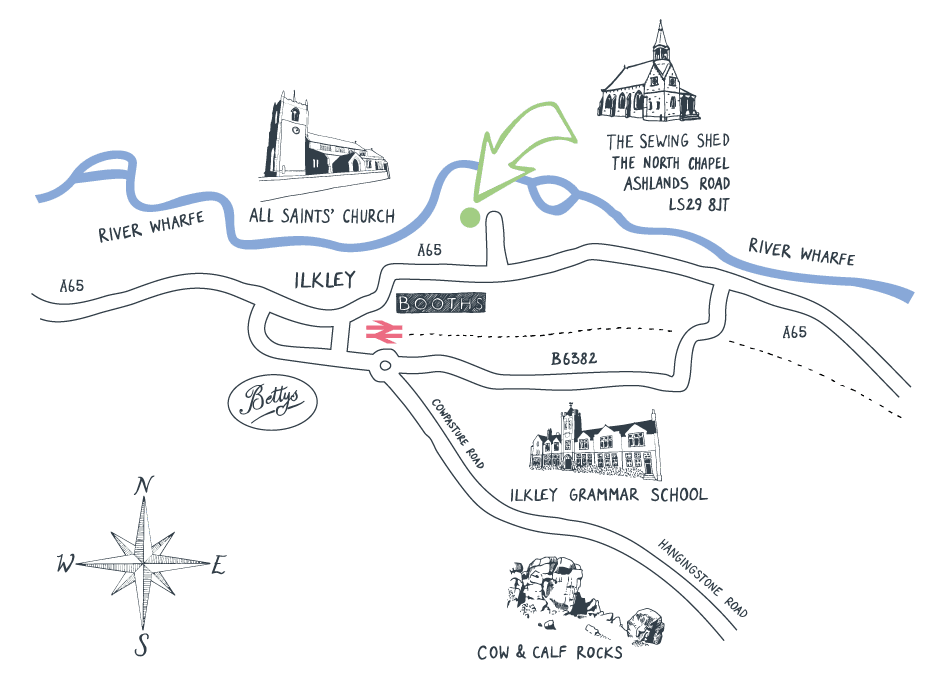
Address: The North Chapel, Ashlands Road, Ilkley, LS29 8JT





Making bright updates to your home can really be fun and this hour long project is easy to achieve and as well as a thrifty win.
So often your ironing board cover becomes stained, unsightly and even torn, by making a cover you can quickly update the unsightly board that needs to be banished to the cupboard to an item you are pleased will grace your laundry or sewing room. I regularly update the covers for The Sewing Shed as they get quite a lot of use from students, here’s my quick guide to sewing one in an hour.
What You need : A piece of fabric at least 7 cms bigger than your ironing board. An air dry fabric marker pen, 38mm bias binding, 1cm wide elastic, thread, Large safety pin.
Top Top: Read through the instructions fully before you start!
Preparation is key. I always wash the existing cover to remove as many marks as possible and use it underneath as it adds padding to the board which helps with the longevity of the cover.
Choose bright fabric that adds a splash of colour or fun to your laundry room but ensure that it is cotton so that it can withstand the high temperatures of the iron.
Make your self a card template 7 cm (2 3/4″) wide by 20cm (8″) long.
Lay your fabric flat on the floor wrong side up.
Fold the ironing board flat and place on top of the fabric on the floor.
Use an air dry magic marker fabric pen and your card template against the edge of the ironing board to create an outline of the board, 7 cms wider than the board.
Remove the board and cut out on the magic marker line, before it evaporates!
The amount of bias binding (and elastic) you will require depends upon the circumference of the board. Place the bias binding on the right side of the cover, lining up the raw edge of the bias binding with the raw edge of the fabric. Pin at right angles well, all the way around the circumference. I folded under the edge at the beginning and the end for a neat finish.
Sew the bias binding in place, sewing around the circumference along the crease line (approx 1/4″ from the raw edge).
Fold over the tape to the wrong side, so that the first seam line is on the edge. Finger press. Pin well in place and edge stitch the bias binding, creating a tube. Attach the elastic to a large safety pin and thread though the bias channel tying the ends together. You may need to try the cover in situ to ensure the elastic is tight enough.


September 6, 2017